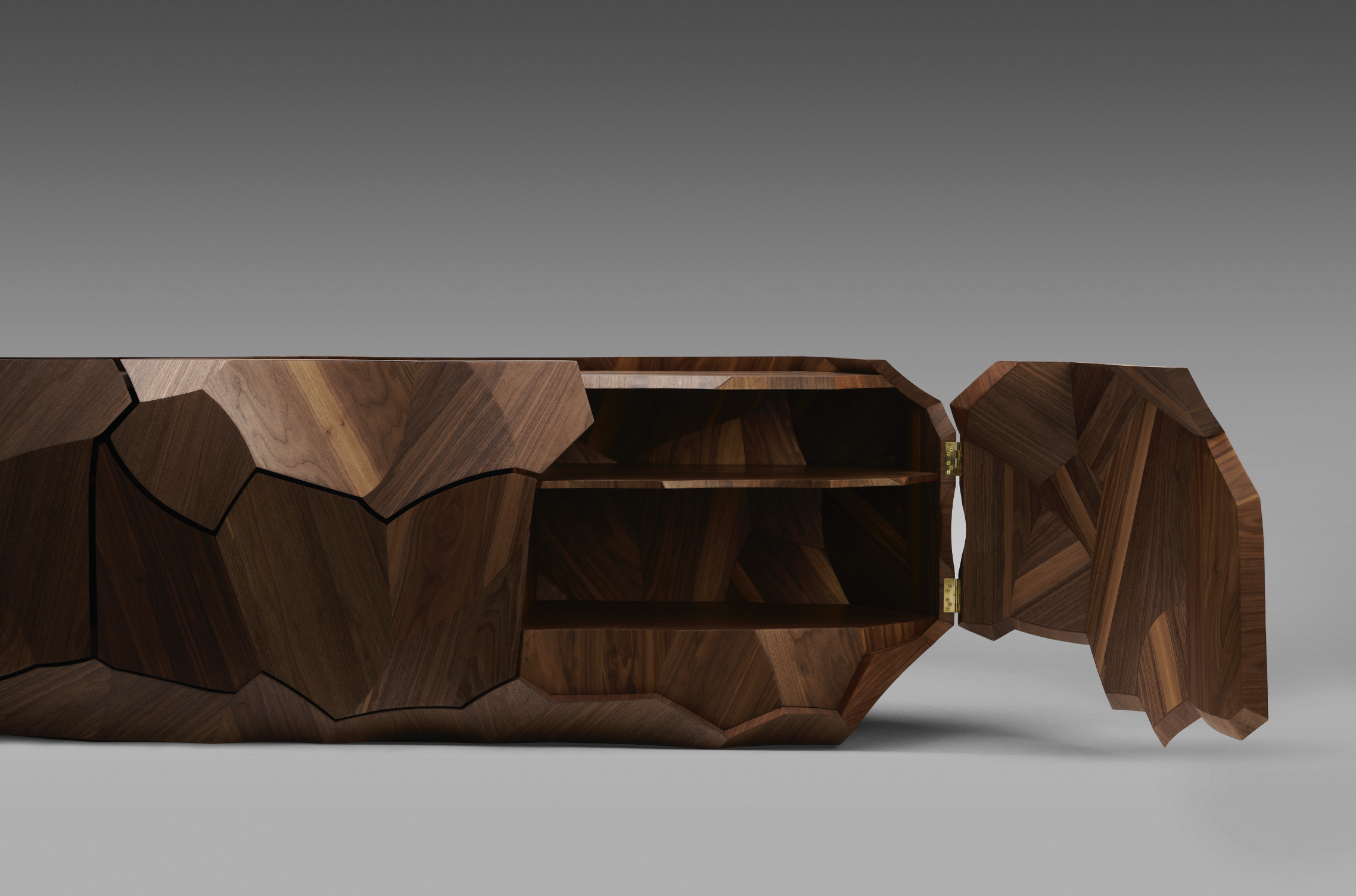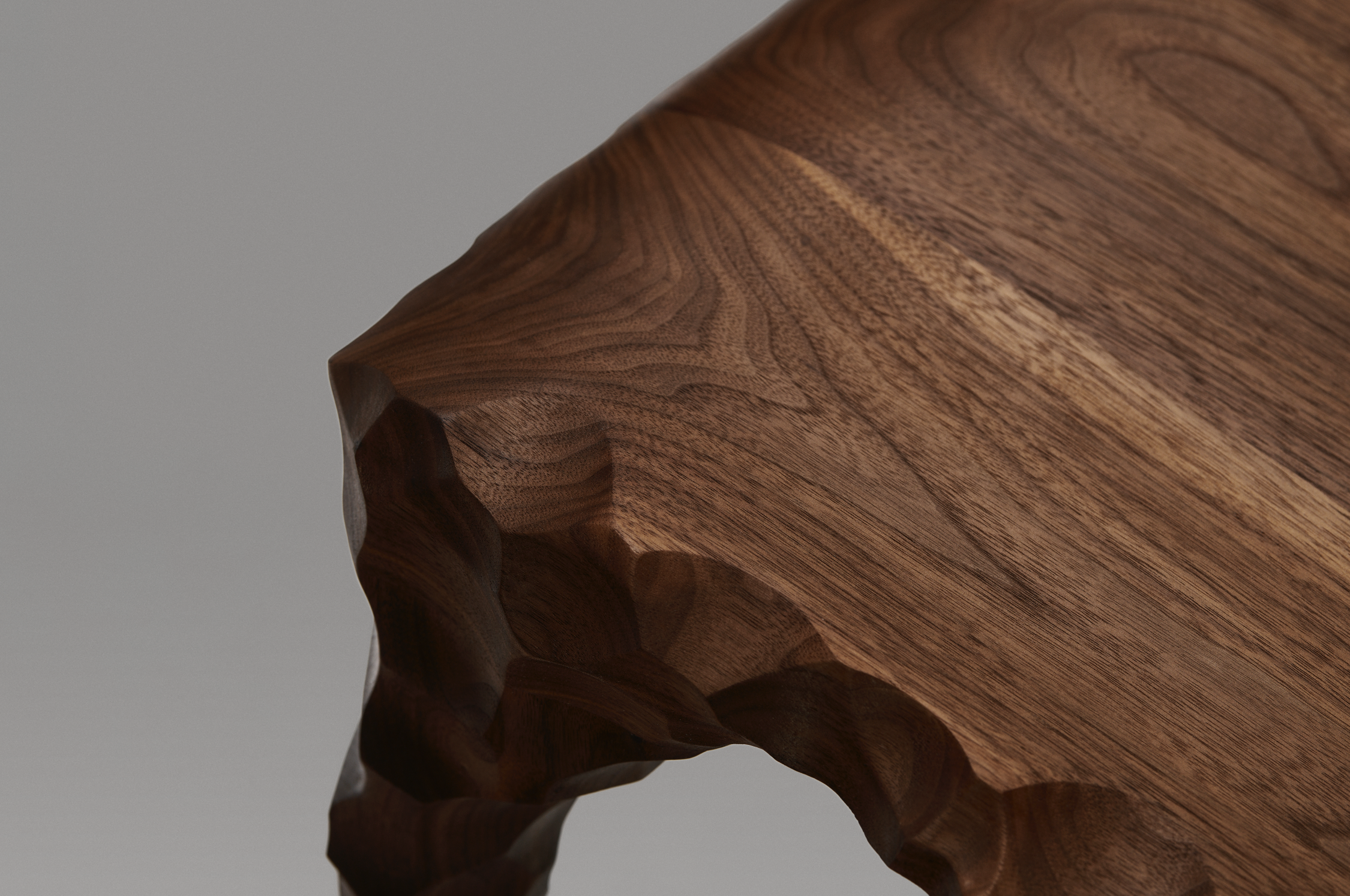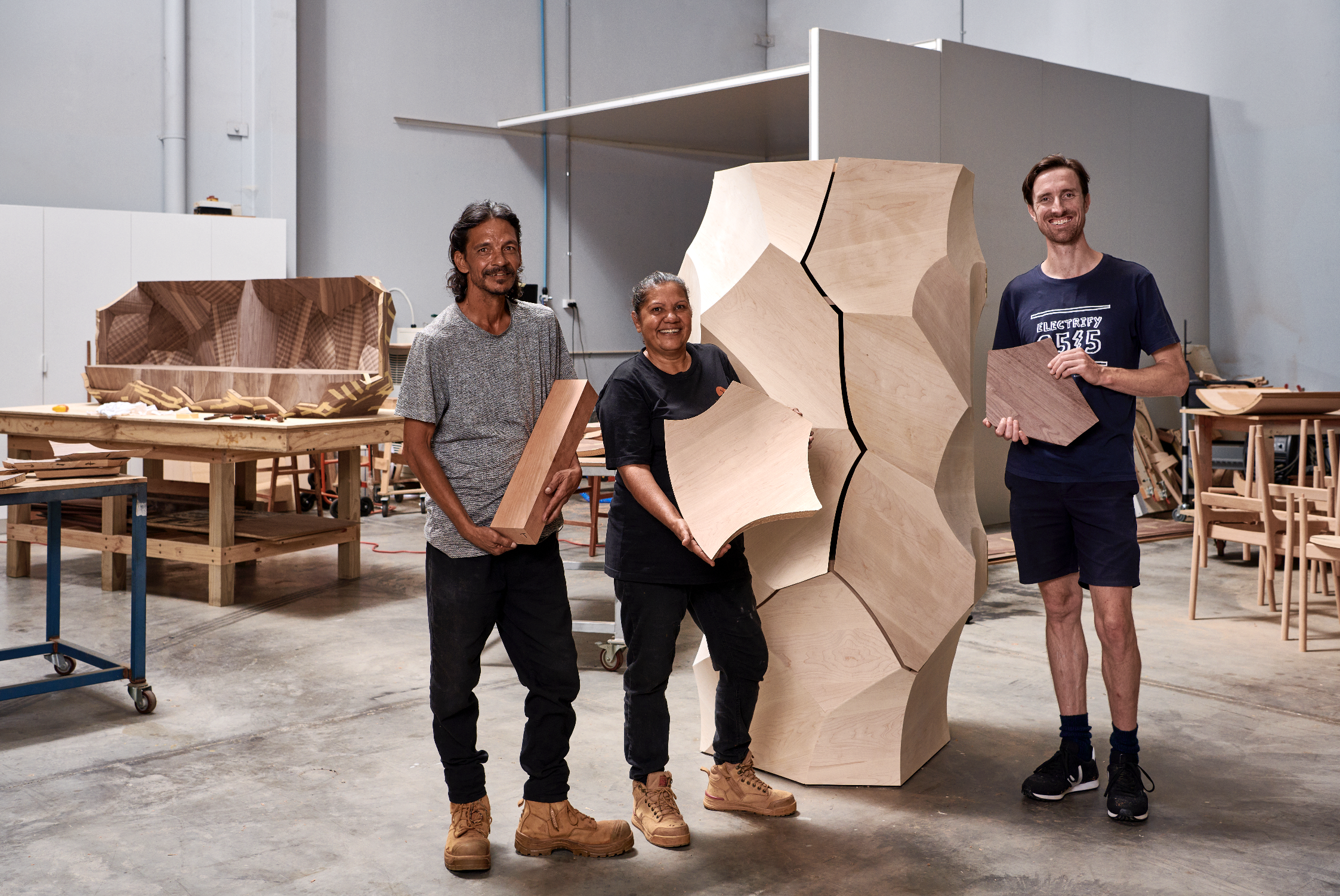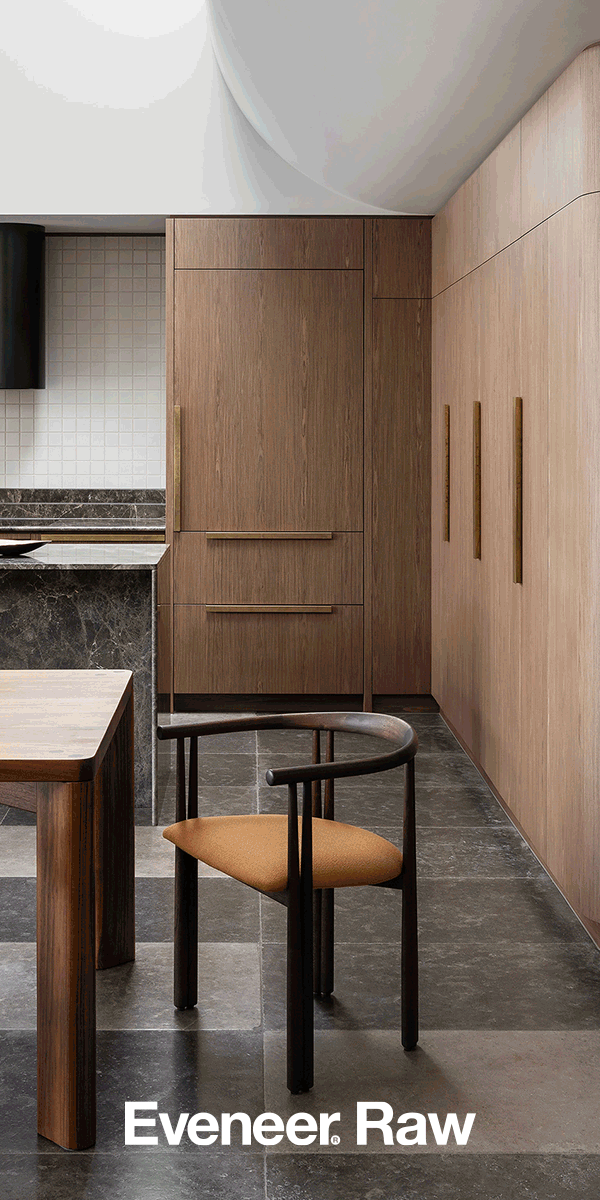Untether work from a conventional desk and expand professional horizons with the Herman Miller Passport Table.
Kurunpa Kunpu - Strong Spirit
The Maruku Collaboration by Tanya Singer + Errol Evans + Trent Jansen

Kuruṉpa Kuṉpu – Strong Spirit is a new body of work born from a three year collaboration between Tanya Singer, Errol Evans, and Trent Jansen. It debuts at the Melbourne Design Fair today before being exhibited at Artbank next week. Over this period, the three partitioners spent time in each other’s communities, learning from each other's unique relationships with Country, family, and community and engaging with each other’s cultural practises and traditions.
Tanya Singer and Errol Evans work as a team in their workshop in Railway Bore, remote South Australia, and are part of Maruku Arts. Evans (a Djabugay and Wester Yalanji man) was instructed by his grandfather, and Singer is a Minyma Anangu woman from Indulkana (SA) taught by Minyma Anangu elders to carve large sheild forms, refined vessels, and weapons. Singer and Evans use punu (wood) carving as a method of cultural expression to create refined timber products that are embodiments of sophisticated cultural narratives about contemporary Aboriginality.
Trent Jansen is an academic and designer who has developed the practise of design anthropology in his eponymous design practise. He has 11 years of experience collaborating with Indigenous Australian designers, championing material cultures that are a critical embodiment of Australian identity. Through his practise, he seeks to connect with those who interact with his designs on an emotional level, producing interiors, products, and furniture that are richly symbolic and tell innately human stories.
The work on display at Melbourne Design Week seeks to highlight the resilience of First Nations People and ngura (Country) through collectable works of furniture inspired by manta pilti (dry sand) and kutijli (shields).
Manta Pilti is a collaboration between Singer and Jansen. It shares the story of a rapidly warming and dehydrating landscape that increasingly threatens the lives of community members and ecosystems, as well as the connection to Country and culture in this place. For countless generations, knowledge of correlations between seasonal patterns of plants and animals has supported life in Indulkana, governing food collection, hunting, totemic relationships, and the Law of the Country, but as the climate changes, these age-old relationships are thrown out of alignment.
In April 2021, Tanya Singer and Errol Evans invited Trent Jansen onto Tanya’s Homelands at Railway Bore where they met to learn about one another and begin a collaboration. Tanya and her sister Trisha introduced the others to their mother’s favourite flower, the Parakeelya, a small purple bloom that once blanketed the Indulkana hills at this time of year. Climate change has increased heat, reduced rainfall, and dried out the sandy soil, and now this flower, of such importance to Tanya, Trisha and their family, is only found in small patches, difficult to spot from the road. This fading bloom and the cracked, dry sand in which it grows are emblematic of a hotter, dryer Country, an example of ecosystem degradation in this region, and the conceptual focus for this design collaboration. Tanya and Trent have used the motif of cracking sand and Tanya’s interpretation of her mother’s favourite flower to inform the design of a furniture collection that can communicate this complex and troubling narrative.
Evans and Jansen were responsible for the design of the Kutitji (shield) cabinet and chair. This project began as a sketch exchange between Errol and Trent, incorporating traditional weapons and shields as components of a chair. Through several iterations of call and response in shield forms, generating a simple chair structure that draws on the idiosyncratic lines and surfaces of these artefacts. From there Evan began carving using a chainsaw to rough out the form before using other mechanical and manual tools to carefully shape these highly refined works.
The collaboration is facilitated and co-funded by the National Gallery of Victoria’s Melbourne Design Week, Australia Council for the Arts, UNSW, Fremantle Arts Centre, Arts South Australia, and the American Hardwoods Export Council.
May 18-21
Melbourne Design Fair
Melbourne Convention and Exhibition Centre
Melbourne VIC
May 23 - July 14
Artbank Melbourne
18-24 Down Street,
Collingwood VIC




